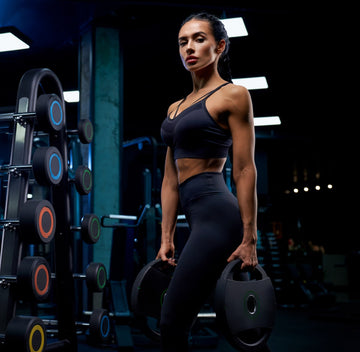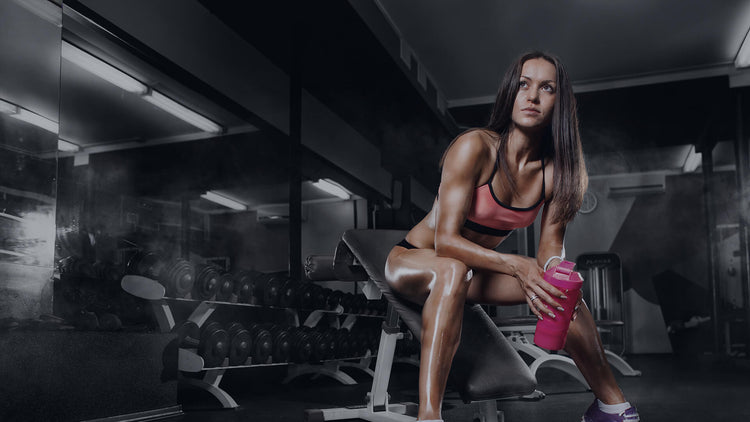FitFlex Tees
Shop By Categories
Adventure Packs

Embrace Your Strength
Discover the power of movement with our range of fitness products designed to amplify your strength and agility. Whether you're hitting the mat, hitting the trails, or hitting new personal records, our gear is engineered to support your body, empower your mind, and unleash your full potential.
Trusted Brands
Equipments

Fuel Your Fitness Journey
Embark on your fitness journey with confidence, equipped with our high-performance products crafted to withstand the rigors of your toughest workouts.
Save Half
Customer Voices
JUST BEGINNING? DONT SWEAT,WE'VE GOT ANSWERS TO YOUR CONCERNS!
Do I actually need gym clothing?
Gym clothes aren't just about style – they're engineered for performance, making them a coveted essential for fitness enthusiasts. Here's why gym wear is so highly sought after and the numerous benefits it provides beyond its aesthetic appeal:
Managing Moisture- Gym apparel is typically crafted from moisture-wicking fabrics like polyester or nylon blends. These materials efficiently pull sweat away from your skin, ensuring you stay dry and comfortable throughout your workout. By regulating body temperature and preventing chafing, they enable you to focus entirely on your exercises without distractions.
Breathability- Many gym garments incorporate mesh panels or ventilation systems to enhance breathability. Improved airflow keeps you cool and prevents overheating, especially in warm or humid conditions. Improved breathability also facilitates faster evaporation of sweat, reducing the buildup of odor-causing bacteria.
Flexibility & Range of Motion- Gym attire is designed with stretchy, flexible fabrics that allow for unrestricted movement. Whether you're performing squats, lunges, or lifting weights, these materials ensure you have the freedom to move without discomfort. This flexibility is crucial for maintaining proper form and minimizing the risk of injury.
Compression Technology- Compression wear, such as leggings or tops, provides a supportive fit that enhances circulation and aids in muscle recovery. By reducing muscle fatigue and soreness, compression garments enable you to push yourself harder during workouts and recover more quickly afterward. Additionally, they promote better body awareness and stability during dynamic movements.
Odor Resistance- Many gym clothes are treated with antimicrobial finishes to combat sweat-related odors. These treatments help keep your apparel smelling fresh even after multiple uses, extending their lifespan and preserving their performance over time.
Versatility- Gym attire isn't limited to the gym – it's versatile enough to be worn for a variety of physical activities, from yoga and running to hiking and beyond. Their lightweight, durable construction and moisture-wicking properties make them suitable for outdoor adventures or casual athleisure wear.
Psychological Boost- Putting on gym clothes signals to your brain that it's time to get active, providing a psychological boost and enhancing motivation. Feeling comfortable and confident in your workout gear can elevate your self-esteem and encourage you to push yourself further during workouts.
Is fitness equipment important?
Fitness equipment holds considerable importance in enhancing workouts by providing additional resistance, stability, and versatility. While exercises without tools are effective, fitness equipment can offer progressive overload, allowing individuals to continually challenge their muscles and improve strength, endurance, and overall fitness levels. Machines and weights provide controlled resistance, which can be adjusted to suit individual fitness levels and goals, facilitating targeted muscle engagement and development. Furthermore, fitness equipment can offer variety and specificity in training, allowing individuals to target specific muscle groups or movement patterns more effectively. Also, equipment like treadmills, ellipticals, and stationary bikes provide options for cardiovascular exercise, helping to improve heart health, endurance, and calorie burning. However, the structured environment of a gym or fitness center, equipped with a wide range of machines and tools, can offer motivation, guidance, and a sense of community, which may enhance adherence to regular exercise habits. While fitness equipment undeniably offers numerous benefits for enhancing workouts, it's important to recognize that it's not an absolute necessity for achieving fitness goals. Exercises without tools are equally viable options, offering simplicity, accessibility, and versatility. Bodyweight exercises, such as push-ups, squats, lunges, and planks, utilize one's own body weight as resistance and can effectively target various muscle groups. Additionally, activities like running, walking, swimming, and cycling require minimal equipment and provide excellent cardiovascular benefits. Moreover, exercising outdoors in natural environments offers mental and emotional benefits, such as reduced stress and increased mood enhancement. Furthermore, exercises without equipment promote functional fitness, improving balance, coordination, and mobility, which are essential for daily activities and overall well-being. Although fitness equipment can enhance workouts and offer additional challenges, it's not a prerequisite for achieving fitness goals, as exercises without tools can be equally effective and rewarding. The key to success lies in finding activities that are enjoyable, sustainable, and aligned with individual preferences and needs.
Is it OK to take a day off?
Taking a rest day from the gym is essential for maintaining overall health and optimizing fitness gains. It offers your body a much-needed break from the physical stress of exercise, allowing for crucial muscle recovery and repair. During intense workouts, muscle fibers experience microscopic tears, and rest days provide the time needed for these muscles to rebuild and strengthen. This process is essential for increasing muscle mass, improving strength, and reducing the risk of overuse injuries such as tendonitis and stress fractures. Rest days also help restore hormonal balance in the body. Intense exercise can temporarily elevate stress hormones like cortisol, which can have negative effects on recovery and immune function. By taking a day off from training, you give your body the opportunity to reset its hormone levels, promoting overall health and well-being. In addition to physical benefits, rest days also offer mental refreshment. Exercise can be mentally demanding, and constant training without adequate rest can lead to burnout and decreased motivation. Taking a day off allows you to recharge mentally, reduce stress levels, and maintain enthusiasm for your workouts. It's an opportunity to step back, relax, and enjoy other activities that bring you joy and fulfillment. However, while rest days are crucial for recovery, there can be downsides to taking too many or too frequent rest days. Extended periods of inactivity can lead to detraining, where your fitness levels decline due to reduced cardiovascular endurance, muscle strength, and flexibility. This can reverse the progress you've made through consistent training and hinder your fitness goals. Excessive rest can also lead to a loss of momentum and motivation. It may become harder to get back into a regular exercise routine, leading to feelings of guilt or frustration. Additionally, reduced physical activity during rest days can lead to a decrease in calorie expenditure, potentially resulting in weight gain if dietary habits are not adjusted accordingly. Therefore, it's essential to find a balance between training intensity and rest to optimize performance and results. Listen to your body, prioritize recovery, and adjust your rest days based on individual needs and training intensity. By incorporating rest strategically into your routine, you can support long-term progress and maintain a healthy balance between physical and mental well-being.
































